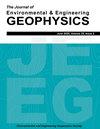Using an Azimuth Electromagnetic Wave Imaging Method to Detect and Characterize Coal-seam Interfaces and Low-resistivity Anomalies
IF 0.7
4区 工程技术
Q4 ENGINEERING, GEOLOGICAL
引用次数: 2
Abstract
It has been found that the traditionally used electromagnetic wave instruments have limitations in detection depths, as well as a lack of directionality. Therefore, those types of instruments cannot meet the needs of geo-steering applications. However, azimuth electromagnetic wave instruments have shown the ability to quickly acquire effective geo-steering information using a tilt coil design method, which can potentially provide accurate guidance for decision-making in drilling direction adjustments. In this study, a design method for an azimuth electromagnetic wave detection instrument for underground coal mining was proposed. The relationships between the structural parameters of the instrument and installation angles of the coils and the response signals were obtained in this study using simulations. Then, by choosing reasonable instrument spacings, coil installation angles, and transmitting frequencies, the detection performances of the instrument were successfully improved. Also, the basic parameter selections of the proposed logging-while-drilling azimuth electromagnetic wave logging instrument were determined to be suitable for underground coal-mining purposes. It was also found that the symmetric compensation of the instrument was sensitive to the interface responses, and the anti-symmetric compensation was sensitive to the anisotropic responses. In addition, a method of detecting the interface positions and azimuth of coal-seam interfaces using azimuth electromagnetic waves, as well as the potential for the application of the instrument for the detection of low-resistivity anomalies in coal goafs, were effectively demonstrated. The results of this study provided theoretical references for future coal-seam boundary detections and explorations, and also added insight into the development processes of coal-seam bedding.用方位角电磁波成像方法探测和表征煤层界面及低阻异常
人们发现,传统使用的电磁波仪器在探测深度上存在局限性,并且缺乏方向性。因此,这些类型的仪器不能满足地质导向应用的需要。然而,方位角电磁波仪器已经显示出利用倾斜线圈设计方法快速获取有效地质导向信息的能力,这可能为钻井方向调整决策提供准确的指导。本文提出了一种煤矿井下方位电磁波探测仪的设计方法。通过仿真得到了仪器结构参数和线圈安装角度与响应信号的关系。然后,通过选择合理的仪器间距、线圈安装角度和发射频率,成功地提高了仪器的检测性能。同时,确定了随钻方位电磁波测井仪的基本参数选择,适合煤矿井下开采。实验还发现,对称补偿对界面响应敏感,反对称补偿对各向异性响应敏感。此外,有效论证了利用方位角电磁波探测煤层界面位置和方位的方法,以及该仪器在采空区低阻异常探测中的应用潜力。研究结果为今后的煤层边界探测和勘探提供了理论参考,也加深了对煤层层理发育过程的认识。
本文章由计算机程序翻译,如有差异,请以英文原文为准。
求助全文
约1分钟内获得全文
求助全文
来源期刊

Journal of Environmental and Engineering Geophysics
地学-地球化学与地球物理
CiteScore
2.70
自引率
0.00%
发文量
13
审稿时长
6 months
期刊介绍:
The JEEG (ISSN 1083-1363) is the peer-reviewed journal of the Environmental and Engineering Geophysical Society (EEGS). JEEG welcomes manuscripts on new developments in near-surface geophysics applied to environmental, engineering, and mining issues, as well as novel near-surface geophysics case histories and descriptions of new hardware aimed at the near-surface geophysics community.
 求助内容:
求助内容: 应助结果提醒方式:
应助结果提醒方式:


